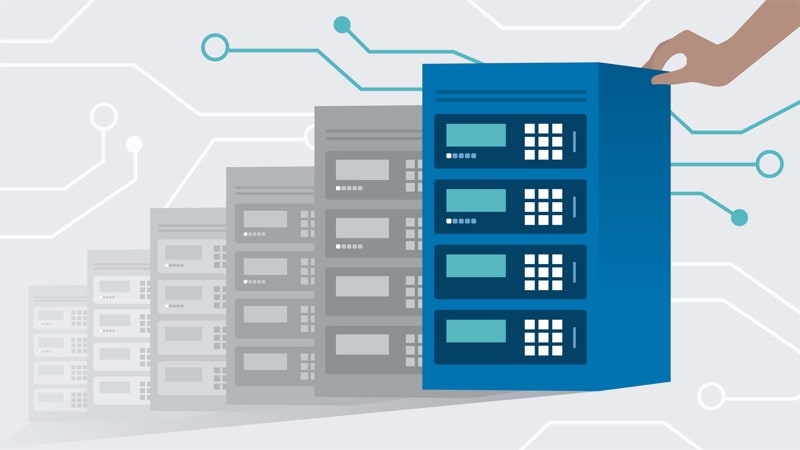Unfortunately, all software must eventually meet its end. However, with a plan in place and the proper training for your staff, your switch to a new server can be simple and painless.
Microsoft’s SQL server has been around for an impressive 11 years, first launching in 2008. But with the release of Microsoft’s new SQL Server 2019, and Microsoft announcing they are withdrawing their support for the 2008 version, the writing is on the wall for this long-lasting (in terms of technology) system.
That means businesses using the 2008 server need to prepare for it’s end of life and re-train themselves and their staff in newer, supported systems.
Why You Should Upgrade or Change your Server
Microsoft ended its mainstream support of the SQL server 2008 in mid 2014, but does still currently offer extended support. However, this will come to an end in mid 2019. As of writing this article, this leaves only a few months for businesses to prepare for changing over to a different service. While the 2008 server will technically still work, there are many reasons why it is ill-advised to do continue to use it.
1) Security
When Microsoft fully withdraws its support for SQL 2008, it will also cease any security updates, leaving your system and in turn your business vulnerable to hacking and data breaches.
2) Customer Loss
Research has indicated that brand loyalty really is a thing of the past, and that customers are less forgiving than ever. With such a range of different services all available online or at a click of a button, keeping customers happy is more important than ever. If you’re business experiences data hacks or security breaches, it could cause customers to no longer trust in your company, and switch to one that keeps their private data safer.
3) Compliance
Depending on what they specialize in, most organizations will have a set of regulatory standards they must adhere to. Regulators expect, for example, that any company that uses or accepts credit card transactions to only use supported systems, for the safety and security of its customers. As security on SQL 2008 falls behind, you may not be able to meet those standards.
IT Resilience
Understanding these issues with unsupported systems and being able to prepare in advance to avoid being left using one is all part of ensuring IT resilience. It is important to be IT resilient not only for the reasons listed above, but also to help make your staff’s jobs as easy as possible.
When staff are regularly confronted with a slow or failing system or constantly having to handle disgruntled customers because of the issues with the system, it can cause them to lose morale and become unmotivated regarding their work, as well as even potentially leaving your firm altogether. This could in turn lead to short-staffing, putting even more strain on your team.
The Options
There are several ways in which businesses can navigate the end of life of SQL 2008. Without a doubt, the best option would be to upgrade your servers from the 2008 edition to either the 2017 or 2019 editions of SQL servers.
Microsoft will help the 2008 users who choose to upgrade by providing extended security options for your current systems for the time it takes your business to upgrade, and, there’s also no extra licensing cost.
If you’re determined to stay with the 2008 edition for as long as possible, you could also choose to migrate your services over to Microsoft Azure, which Microsoft will be supporting until 2022.
While this does not constitute a permanent solution, it does give businesses more time to explore their options or plan their upgrade process.
If you’ve been caught out by the news of the end of Microsoft’s SQL Server 2008 and need more time to begin your upgrades, but don’t want to transition to Azure first, then you can always pay for extended Microsoft support of your 2008 edition.
This really should only be a short-term solution however, as extended support is expensive and doesn’t make sound financial sense for longer than a few months.
Training
Whatever option you choose, all paths really do lead to utilizing one of the later editions of SQL servers within your company. Therefore, part of your IT resilience and upgrading strategy should also include staff training. Keeping your system secure and up to date by upgrading is all well and good, but without staff experienced in using it, all manner of issues may occur.
With that in mind, selecting key members of staff to undergo necessary training and certification is important. Courses for SQL servers are varied, from administration to security, allowing you to select the training most suited to your business needs.
Most certification companies will offer on or off campus learning too, allowing your staff to help with the transition as they learn, which is also an opportunity to encourage peer to peer learning as well as team working.
Don’t Support Unsupported
Whatever option you choose, one thing is certain: operating an unsupported system will only lead to problems down the line regarding security, data protection, and customer satisfaction. With a variety of options available, you can find the right solution for your business and ensure your staff has the training needed to back up those decisions.

